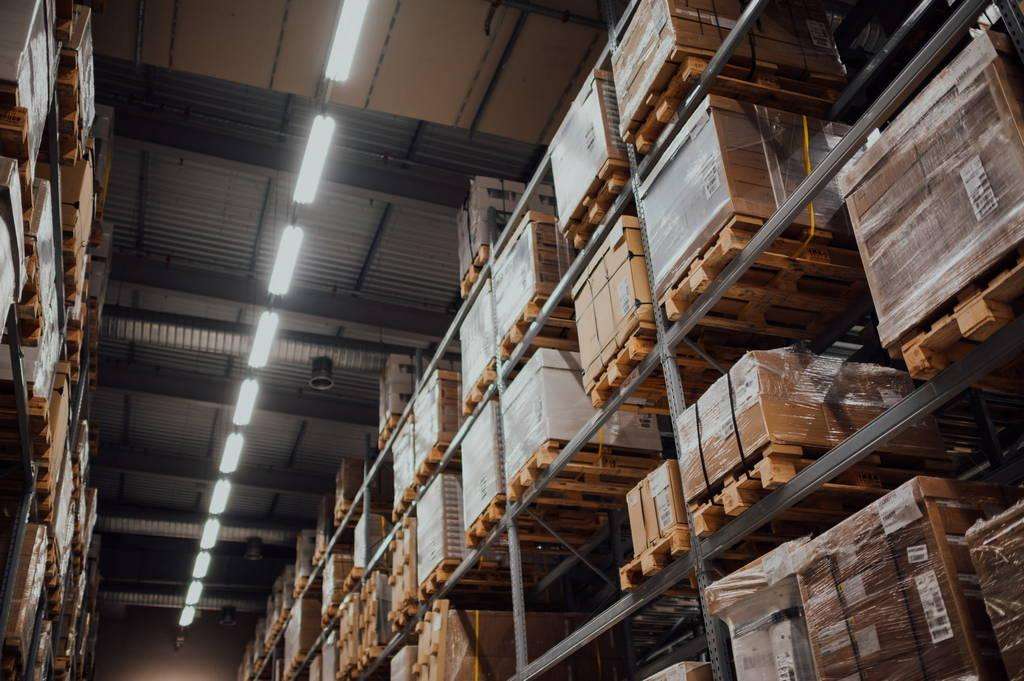As an Amazon FBA seller, optimizing your supply chain properly can make or break your entire business. It’s one of the most crucial aspects to making your job easier, improving your bottom line and scaling the operation. There are a number of ways to do this – and we’ll explore 8 of them right here in this article. From saving money with an FBA prep service… to avoiding costly supply chain mistakes… these strategies will help you streamline your operation and boost your profits. So let’s get started!
Quick Links:
- Why is a healthy supply chain important?
- Benefits to optimizing Amazon FBA supply chain
- Utilize an FBA prep service
- Look outside of China and Alibaba
- Prevent costly mistakes and delays
- Diversify suppliers, manufacturers & distributors
- Diversify freight forwarders
- Automate your supply chain as much as possible
- Weigh the pros & cons of each shipping option
- Explore new niches & source new products
Why is a healthy supply chain important?
The success of your Amazon FBA business hangs heavily on your ability to optimize & run your supply chain efficiently. A well-oiled distribution system ensures that you have the right products in stock at all times – while also minimizing your costs and maximizing profit. It’s often a complex task to manage, but it’s crucial to get right if you want to achieve long-term success on Amazon.
On the contrary, a poor supply chain can have serious consequences. For example – it can lead to delays in getting products to market, which can cost your company sales and damage its reputation. In addition, a bad supply chain can also disrupt production… leading to costly errors, delays and downtime.
Keep in mind – Amazon has very strict requirements for how products are delivered to customers, and if a company doesn’t meet those requirements… it risks having its products removed from the Amazon platform – or even having their seller account suspended or banned. Amazon FBA sellers need to partner with experienced logistics providers that can ensure their products are delivered on time and in good condition.
An optimized distribution system allows your Amazon business to run smoothly and efficiently – keeping your products in stock and ready to be purchased at all times during the year. In an increasingly competitive online marketplace, having a well-run distribution system can be the difference between success and failure.
Here are a few more reasons why an optimized logistics network is so important for your Amazon business:
Benefits to optimizing Amazon FBA supply chain
1. It helps you keep costs down: A well-functioning distribution system helps you minimize waste and avoid costly mistakes. By streamlining your operations, you can save money on inventory, shipping, and other related costs.
2. It allows you to scale up quickly: If your logistics network is efficient, you’ll be able to scale up your business quickly and efficiently. This is essential if you want to grow your Amazon business at a rapid pace.
3. It improves your customer satisfaction levels: Happy customers are key to any successful business, and an optimized supply chain can help you deliver a great customer experience. When customers receive their orders quickly and without any problems, they’re more likely to be satisfied with your service. This will often lead to more 5-star reviews and word-of-mouth purchases – along with higher search rankings and conversion rates, of course.
A well-organized supply chain will help to keep your inventory levels sufficient, reduce the risk of stockouts and ensure that you always have the products your customers need. Ultimately, an optimized distribution system will help to increase your profits and scale your business. While marketing is extremely crucial too… don’t overlook the benefits of an optimized logistics network either. They’re both equally important.
Now, let’s dive into the 8 money-saving tactics to accomplish this:

Utilize an FBA prep service
This will likely be your “quickest win” so to speak – since the economics behind using an FBA prep service are a no-brainer (for most Amazon FBA sellers). With Amazon’s strict packaging and labeling requirements, an FBA prep service like ZonPrep can take the work off your hands – while saving you time and money, instead of attempting to run it by yourself and your team.
This type of FBA prep service will inspect your inventory, ensure there’s no damage or missing units, and then package & label it according to your specifications. You can also store your inventory in a climate-controlled warehouse for as long as you need, and drip-feed it to Amazon at your desired pace (while forwarding parts of your inventory elsewhere too). The costs tend to work out fairly well – which is a big reason why most Amazon sellers prefer to use this type of FBA prep service.
Look outside of China and Alibaba
Any business that wants to improve its Amazon FBA supply chain needs to consider sourcing suppliers from outside of China and Alibaba. By expanding the search for potential suppliers to other countries, businesses can tap into new markets and find better deals.
Some good choices include India and Vietnam – both of which offer competitive price points without sacrificing on quality. Additionally, these countries often have excellent infrastructure for shipping goods within a reasonable time frame, which can be essential for businesses looking to maintain a steady supply of inventory for their Amazon storefronts.
In addition, by working with suppliers in other countries, businesses can reduce their dependence on China and Alibaba – which can be risky in the current political climate. There’s been a lot of media attention in recent years of a potential trade war (at some point) between China and the US – which often depends on the naturally-swinging US political situation at any moment in time. By forming relationships with suppliers in other countries, you can mitigate risk and avoid having your eggs all in one basket.
In the end, you should always leave the door open to sourcing suppliers from outside of China and Alibaba, and any business that wants to improve its Amazon FBA distribution network should explore all of their options. Doing so could lead to significant improvements in the quality and cost of the products they sell on Amazon – while lowering the risk of being harmed by constantly shifting political tensions.

Prevent costly mistakes and delays
There’s 2 overlooked (but easy to fix) examples that come to mind for avoiding costly mistakes & delays – which includes 1) maintaining strong communications lines with suppliers & logistical contacts… and 2) ensuring your distribution system data remains accurate.
Poor communication lines with suppliers & logistics can lead to delays in your inventory and shipments. A well-run logistics network is essential for ensuring that you always have enough inventory to meet customer demand, so any breakdowns or problems in this system can seriously impact your bottom line. If you are not keeping your suppliers informed about changes to your order placement or shipping timelines, they may not be able to adjust their own production schedule in a timely manner. These are the avoidable kinds of disruptions that cause back-orders or lost shipments – ultimately costing you money.
Instead, make sure your suppliers clearly understand you have a strong desire to maintain a clear & open line of communication with them at all times. Communication also plays a key role in being able to quickly respond to issues or changes as they arise, which will help keep things running smoothly and prevent any costly delays or problems down the line.
In terms of having accurate logistics network data… many FBA sellers recommend avoiding Amazon’s web services (or from relying on them exclusively). First and foremost, Amazon’s web services are geared towards selling products, not managing inventory. As a result, they can be inaccurate when it comes to tracking stock levels and sales data – giving you an flawed birds-eye view of your FBA business and potentially leading to costly, uninformed decisions.
In addition, Amazon’s web services are subject to change at any time, which can disrupt your business operations. Using Amazon’s web services exclusively puts you at the mercy of their platform – if something goes wrong with Amazon’s servers, your FBA business will suffer as a result. For these reasons, you may want to consider a backup system in place for tracking, managing and optimizing your distribution network.

Diversify suppliers, manufacturers & distributors
In order to maintain a streamlined Amazon FBA supply chain, consider diversifying your suppliers. Doing so will allow you to source high-quality products from a variety of different sources – reducing the risk of relying too heavily on one or two suppliers.
Additionally, working with multiple suppliers will help you stay on top of shifting market demands and ensure that you always have access to the products that your customers want most. By partnering with a range of manufacturers and distributors, you can also protect your shipping processes and minimize delays due to unlikely events – such as strikes, natural disasters, factory issues and other supply chain disruptions.
Overall, a diverse supply network is essential for managing an effective Amazon FBA business – you never want to have your eggs in one basket with one supplier. At minimum, keep a few other suppliers at top of mind, in case your original supplier or manufacturer is running low on materials or expecting delays.
Diversify freight forwarders
Freight forwarders play a pivotal role in ensuring that goods are transported efficiently from one destination to another. However, relying on a single freight forwarder can be risky, as it can lead to major disruptions in the event of a strike or other unforeseen event. Diversifying one’s freight forwarders is therefore essential in order to reduce risk and optimize your logistics network.
By working with a variety of different freight forwarders, you can benefit from their individual strengths and capabilities. For example, one freight forwarder might specialize in air freight, while another might be more experienced in handling ocean freight. By diversifying your freight forwarder network, you can ensure that your distribution system is able to adapt to changes in the market, prevent stockouts and keep your inventory levels sufficient.
In certain cases, diversifying freight forwarders can also help to get the best rates and optimize costs. Working with a variety of freight forwarders can also help to build relationships and create efficiencies. Remember – not all freight forwarders are created equal, so it’s important to do your research and select a company that’s reliable, has a good reputation, communicates effectively and never leaves you hanging when a unique situation arrives.
Ultimately, having multiple freight forwarders at your disposal is the best way to ensure a cost-efficient and optimal distribution network.

Automate your Amazon FBA supply chain as much as possible
Automation can be an extremely useful tool in your FBA business. Streamlining critical tasks, such as inventory management and order fulfillment, allows you to keep track of your entire distribution system in real-time and respond quickly to changes or disruptions – without having to rely on manual processes.
In addition, automating your internal communication systems gives you faster access to important information from all corners of your business. Not only does this help to improve decision-making, but it also allows you to keep tabs on how each part of your logistics network is performing at all times.
Manually running an Amazon FBA distribution network can be a complex and time-consuming task. Luckily, there are a number of ways to automate your supply chain and make it more efficient.
One way to use automation is to use software to track inventory levels and reorder stock when necessary. This can help to ensure that you always have the right amount of supplies on hand, without over-ordering or running out of stock. Additionally, many software programs allow you to set up alerts so that you can quickly respond to any changes in your inventory levels.
Another way to automate involves using data from your sales reports to forecast future demand. This information can help you to plan ahead for spikes in customer demand, and make sure that you have enough stock on hand to meet the needs of your customers. Additionally, by analyzing your sales data, you can identify any trends or patterns that may impact your future supply needs.
When it’s done right, the benefits of automating your Amazon FBA supply chain are clear: reduced costs, improved efficiency, and greater agility in response to external market factors. By taking advantage of these automation techniques, you can free up valuable time and resources that further contribute to growing and scaling your ecommerce business.
Weigh the pros & cons of each shipping option
Air freight is a popular and affordable shipping option for lightweight shipments that weigh between 145-500 kilograms (or 330–1,100 pounds). The time frame of 8 to 10 days allows you enough leadtime before your products arrive at their destination – which can be crucial when managing inventory. However, there are higher rates associated with this service compared to other methods, so it’s important to review prices and transit times before committing fully.
Express shipping offers fast transit times – typically within five days. It’s perfect for smaller shipments that weigh less than 145 kilograms (or 320 pounds). However, it does come with a slightly higher cost – fees can range from $5 to $10 per kilogram in addition to standard shipping fees. Nevertheless, this option is ideal for businesses and individuals who need their items delivered quickly and reliably. While you likely won’t use any type of express shipping option for large inventory shipments… it’s the clear choice for those who want – or need – fast delivery on small shipments.
Ocean freight is your go-to option for large quantities of goods over long distances – helping you reduce shipping costs on bulk purchases. Additionally, the high volumes of trade typically associated with the ocean freight industry mean that most shipping routes operate at maximum efficiency, even during peak seasons or times of heavy traffic. You’re typically looking at a maximum $4,000 per container – which heavily reduces your shipping fees compared to air freight or express shipping.

Explore new niches & source new products
As an Amazon FBA seller, one of the key benefits to exploring new niches and sources for products is the opportunity to expand your inventory. By identifying and tapping into untapped markets, you can grow your business and gain a competitive advantage over other sellers. This can also help you find products that are in high demand but less saturated with competing sellers, increasing your sales potential and margins.
Additionally, exploring new niche markets can provide valuable insights into consumer behavior and buying trends – helping you to stay on top of new buyer preferences. Whether through analyzing industry data or conducting in-depth market research, introducing new products to your store’s offering is crucial for continued growth as an Amazon FBA seller. So why not dive in and explore those exciting new opportunities today?
Final thoughts on optimizing your Amazon FBA supply chain
While there is no one-size-fits-all solution to optimizing your supply chain… taking the time to explore each shipping option and automate your system as much as possible will help you run a smoother, more profitable FBA business. Working with a prep service can also help take some of the burden off of you, while diversifying your suppliers can open more product sourcing opportunities as well (especially if a supplier experiences issues). By using these tips, you should be able to streamline your distribution network and improve your bottom line.
